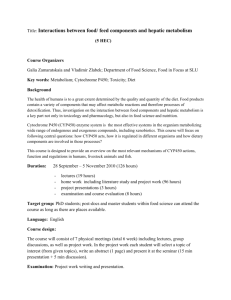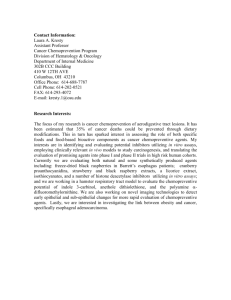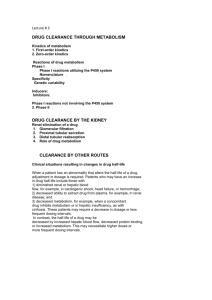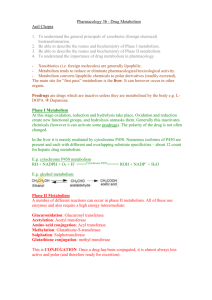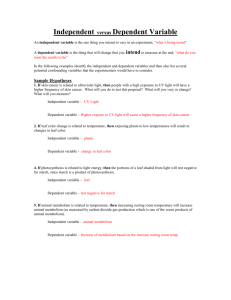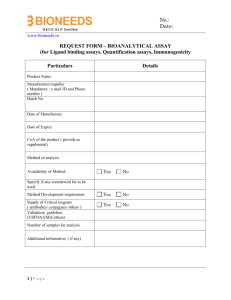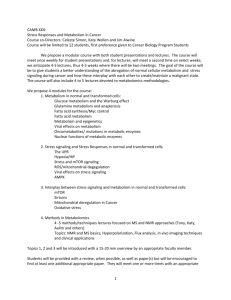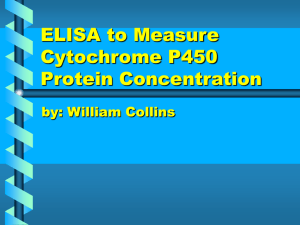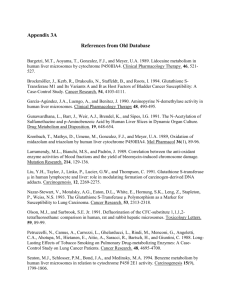Metabolism Assays
advertisement
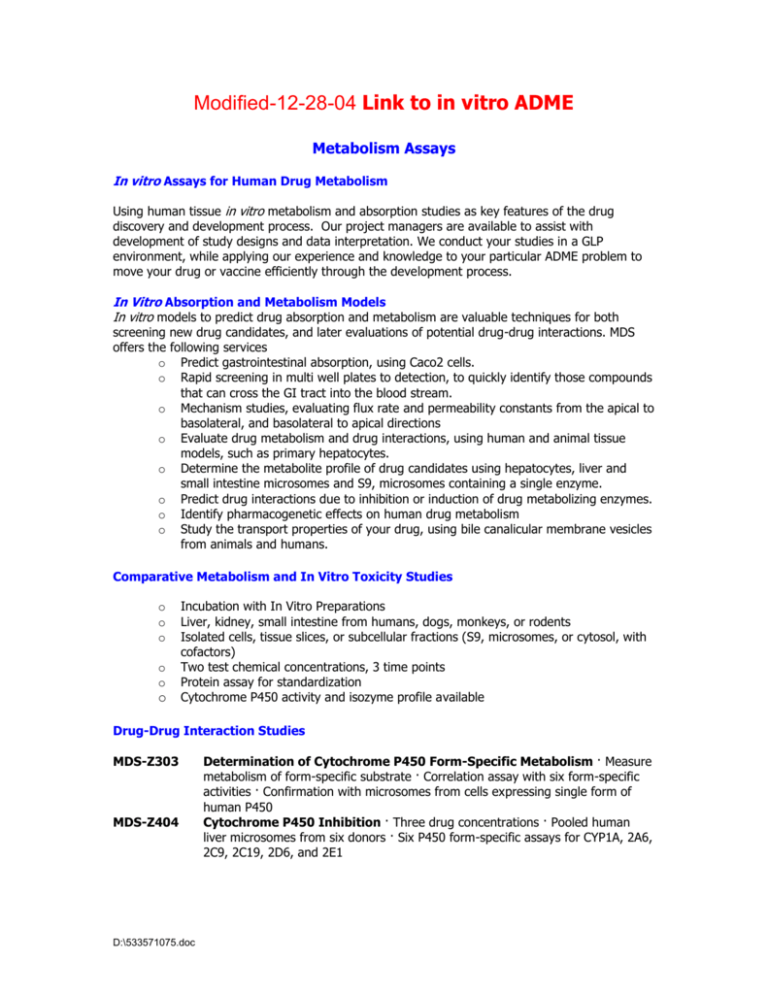
Modified-12-28-04 Link to in vitro ADME Metabolism Assays In vitro Assays for Human Drug Metabolism Using human tissue in vitro metabolism and absorption studies as key features of the drug discovery and development process. Our project managers are available to assist with development of study designs and data interpretation. We conduct your studies in a GLP environment, while applying our experience and knowledge to your particular ADME problem to move your drug or vaccine efficiently through the development process. In Vitro Absorption and Metabolism Models In vitro models to predict drug absorption and metabolism are valuable techniques for both screening new drug candidates, and later evaluations of potential drug-drug interactions. MDS offers the following services o Predict gastrointestinal absorption, using Caco2 cells. o Rapid screening in multi well plates to detection, to quickly identify those compounds that can cross the GI tract into the blood stream. o Mechanism studies, evaluating flux rate and permeability constants from the apical to basolateral, and basolateral to apical directions o Evaluate drug metabolism and drug interactions, using human and animal tissue models, such as primary hepatocytes. o Determine the metabolite profile of drug candidates using hepatocytes, liver and small intestine microsomes and S9, microsomes containing a single enzyme. o Predict drug interactions due to inhibition or induction of drug metabolizing enzymes. o Identify pharmacogenetic effects on human drug metabolism o Study the transport properties of your drug, using bile canalicular membrane vesicles from animals and humans. Comparative Metabolism and In Vitro Toxicity Studies o o o o o o Incubation with In Vitro Preparations Liver, kidney, small intestine from humans, dogs, monkeys, or rodents Isolated cells, tissue slices, or subcellular fractions (S9, microsomes, or cytosol, with cofactors) Two test chemical concentrations, 3 time points Protein assay for standardization Cytochrome P450 activity and isozyme profile available Drug-Drug Interaction Studies MDS-Z303 MDS-Z404 D:\533571075.doc Determination of Cytochrome P450 Form-Specific Metabolism · Measure metabolism of form-specific substrate · Correlation assay with six form-specific activities · Confirmation with microsomes from cells expressing single form of human P450 Cytochrome P450 Inhibition · Three drug concentrations · Pooled human liver microsomes from six donors · Six P450 form-specific assays for CYP1A, 2A6, 2C9, 2C19, 2D6, and 2E1 Cytochrome P450 Induction o o o o Hepatocytes in primary culture Preliminary range finding experiment Definitive experiment with 5 concentrations Measurement of marker enzyme activities, confirmed by Western blotting · Available in rat or human hepatocytes Peroxisome Proliferation Studies: Palmitoyl CoA-Oxidation MDS-Z 201 Rat Hepatocytes MDS-Z 202 Human Hepatocytes o Hepatocytes in primary culture · o Preliminary cytotoxicity experiment · o Definitive experiment with 5 concentrations of the test agent and solvent and positive controls · o Palmitoyl CoA-oxidation as endpoint · o Four independent cultures per concentration in each experiment · o Concurrent measurement of DNA or protein levels in each culture Cytotoxicity Assays In Primary Cultures: MDS-Z 200 Screening Assays · Hepatocytes or renal proximal tubules · Two experiments with 6 concentrations tested with positive, solvent, and media controls Four replicate samples Three time points (conducted in 96-well dishes) FIVE COMPOUNDS MINIMUM. MDS-Z101 Enzyme Release (lactate dehydrogenase) MDS-Z102 MTT Conversion (Mitochondrial Function) Available Species · Human · Rat · Dog · Rabbit · Mouse · Guinea pig · Hamster · Nonhuman primates Specific functional assays · Available for determining chemical mechanism of action and include urea synthesis, protein synthesis, lipid peroxidation, and oxygen consumption, among others. Hemolytic Potential and Compatibility Assays M108 Hemolytic Potential in Rat or Dog Blood · Whole rat or dog blood is exposed to the test article and the amount of hemoglobin released from lysed cells is determined spectrophotometrically · Untreated controls, vehicle controls, and positive controls are included · Known volumes of whole blood are used to generate a standard curve representing 0% to 100% hemolysis M108-A Hemolytic Potential in Human Blood · Same as M108 but using human blood M108-B Hemolytic Potential in Rat, Dog, and Human Blood · Same as M108 but using blood from all three species D:\533571075.doc M108-C Optional Plasma and Serum Compatibility: Concurrent with M108, M108-A, & M108-B, compatibility is determined by adding the test article to plasma and serum, individually, and then assessing the occurrence or nonoccurrence of precipitation or coagulation of plasma or serum protein Comparative Metabolism and In Vitro Toxicity Studies Incubation with In Vitro Preparations: Liver, kidney, small intestine from humans, dogs, monkeys, or rodents.Isolated cells, tissue slices, or subcellular fractions (S9, microsomes, or cytosol, with cofactors) Two test chemical concentrations, 3 time points Protein assay for standardization Cytochrome P450 activity and isozyme profile available D:\533571075.doc
